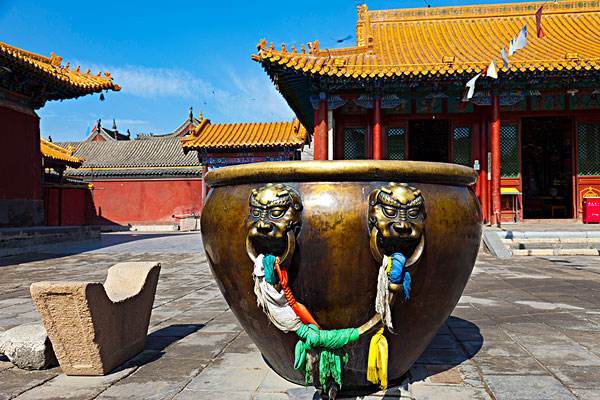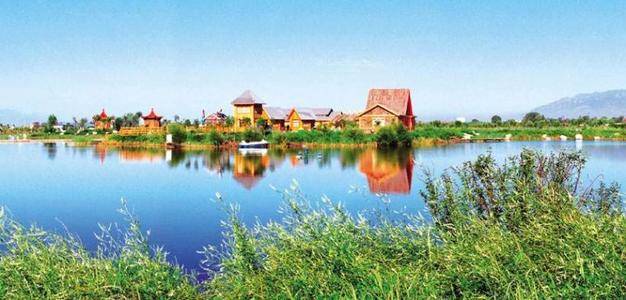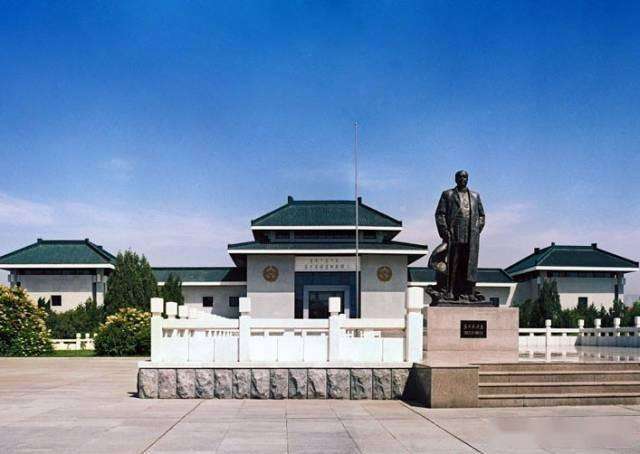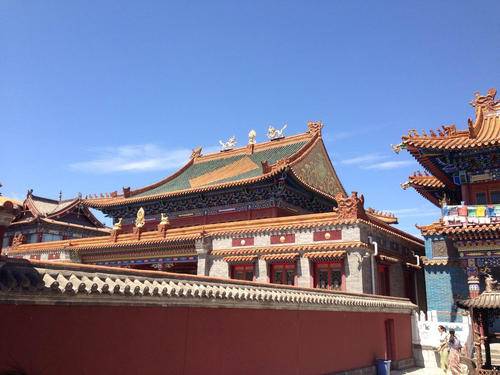Islamic Style Street
Islamic Style Street is located in the Hui District of Hohhot, with a total length of 1150 meters. The street is lined with grand buildings decorated with corbel arches, domes, and colorful glazed bricks. The rows of pointed arch windows and doors, the solid and full green or yellow spherical domes, and the towering columnar towers, all in a desert yellow with green and white accents, allow visitors to experience the rich Islamic style.
Nanhu Wetland Park
Nanhu Wetland Park is located south of the Second Ring Road, west of Zhaojun Road, north of Dahei River, and east of Shaliang Village in Hohhot. It is a low-lying area in Hohhot, currently consisting of fish ponds, sand pits, and grasslands. Nanhu Wetland Park is divided into three main functional areas: Grassland Scenery Area, Wetland Landscape Area, and Riverside Area. The Grassland Scenery Area focuses on the development history of the Mongolian ethnic group, showcasing the changes in their lifestyle and economic development, allowing people to appreciate the unique charm of Inner Mongolia's grassland culture and customs.
The memorial hall is a majestic building with a unique ethnic style. It was completed and opened on December 23, 1992, and consists of six parts: the main hall, memorial square, statue platform, flag-raising platform, stele pavilion, and archway. The exhibition hall of the memorial hall is divided into a foyer and nine exhibition rooms, displaying a total of 160 cultural relics, 58 documents, and 305 photos. The front of the foyer features a seated statue made of white marble, with a large painting of the 'Beautiful and Fertile Inner Mongolia Grassland' as the background. The east and west walls are adorned with four large imitation white marble reliefs, each 5.5 meters high and 3.5 meters wide, depicting the contributions made by the Chinese people, especially the people of Inner Mongolia, to the struggle for national liberation, national unity, and the Chinese revolution and construction over the past 80-plus years since the May Fourth Movement.
Dazhao Temple, located in the southern part of the old city of Hohhot, was built under the supervision of Altan Khan, the leader of the Tumed Mongol tribe, in the eighth year of the Wanli period of the Ming Dynasty (1580). The temple belongs to the Gelug school of Tibetan Buddhism (Yellow Hat sect of Lamaism) and is the earliest Lamaist temple built in Hohhot. The architectural style of Dazhao Temple adopts the form of Han Chinese temples, with main buildings including the Mountain Gate, Hall of Heavenly Kings, Bodhi Hall, Nine-room Building, Sutra Hall, and Buddha Hall. Among them, the Sutra Hall and Buddha Hall are connected and collectively referred to as the 'Main Hall'. Visitors can easily tour the entire temple by entering the Mountain Gate and walking along the central axis. During the Qing Dynasty, Dazhao Temple was honored as the 'Imperial Temple'.











